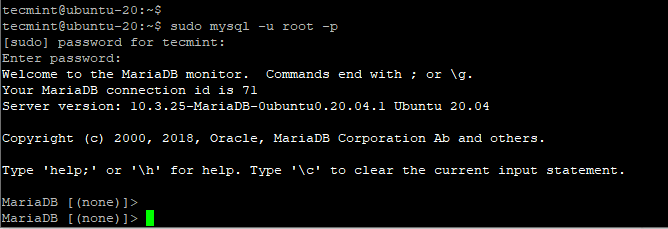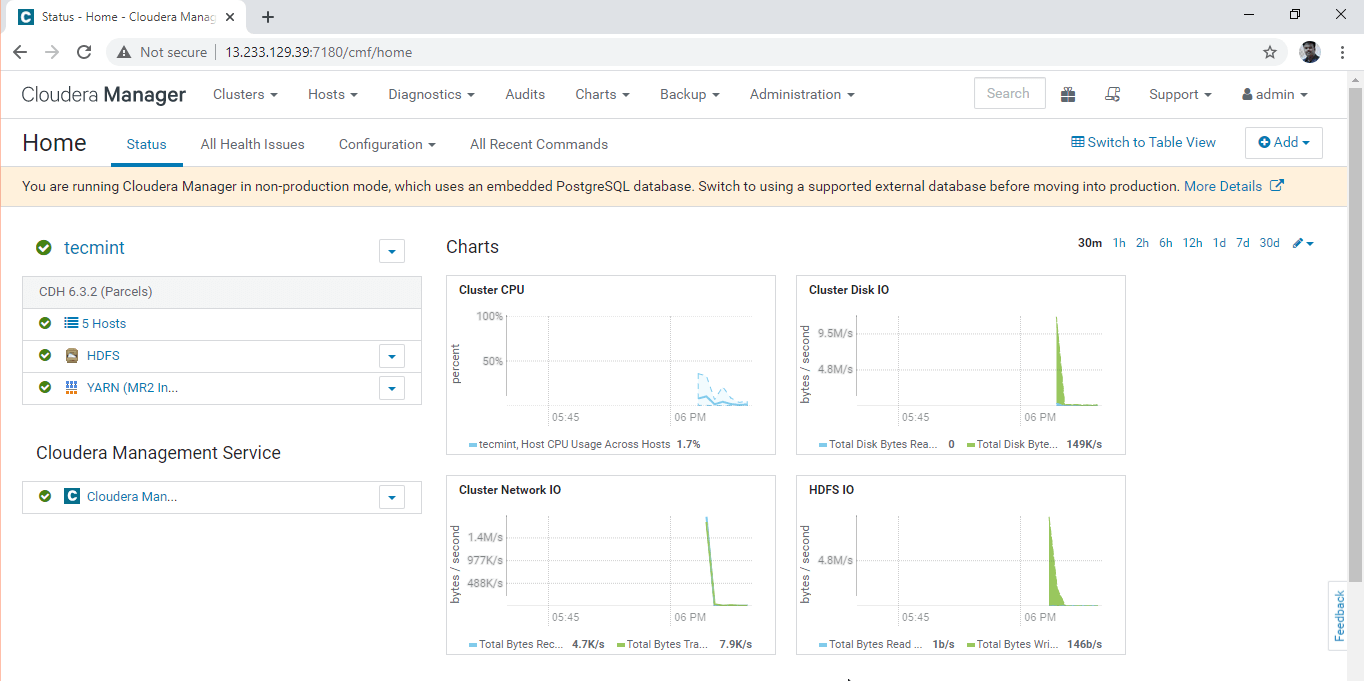MySQL is a popular and widely used database management system that stores and organizes data and allows users to retrieve it. It comes with a vast array of options that grant users certain permissions to tables and databases. In this guide, you will learn how to create a new user and grant permissions in the
Make Linux Great Again
How to Use the nmap Command
Nmap is a powerful network scanning tool for security audits and penetration testing. It is one of the essential tools used by network administrators to troubleshooting network connectivity issues and port scanning . Nmap can also detect the Mac address, OS type , service version, and much more. This article explains the basics of how
Linux Head Command
The head command is used to print the few first lines (by default 10 lines) of file or standard output. This tutorial shows you how to use the Linux head command with practical examples. Head Command Syntax# Below is the basic syntax for the head command: head [OPTION]… [FILE]… Here, OPTION – You can pass
How to Set Up High Availability for Namenode – Part 5
Hadoop has two core components which are HDFS and YARN. HDFS is for storing the Data, YARN is for processing the Data. HDFS is Hadoop Distributed File System, it has Namenode as Master Service and Datanode as Slave Service. Namenode is the critical component of Hadoop which is storing the metadata of data stored in
How to Install MariaDB on CentOS 8
MariaDB is an open-source, community-developed relational database management system. It is forked from MySQL and created and maintained by the developers who created MySQL. MariaDB is intended to be highly compatible with MySQL but new features have been added to MariaDB like new storage engines (Aria, ColumnStore, MyRocks). In this article, we will take a
How to Rename Files and Directories in Linux
It’s a basic requirement to rename the files and directories on a Linux system. There are two ways to rename files using command-line terminal or via GUI file manager. In this tutorial, we will cover how to rename files and directories using mv and rename commands. Rename Files using mv Command# The mv command is
How to Fix “W: Some index files failed to download.” Error In Ubuntu
Sometimes you might encounter the error “W: Some index files failed to download.” on Ubuntu when updating the system. Here’s an excerpt of the error. W: Failed to fetch archive.ubuntu.com/ubuntu/dists/quantal-security/Release.gpg Unable to connect to archive.ubuntu.com:http: W: Some index files failed to download. They have been ignored, or old ones used instead. From the first line,
Linux Time Command
Time command is useful when you want to determine the command execution time. Generally, it’s useful to test the performance of the commands and scripts. In this guide, we will cover how to use the time command in Linux. When you are writing multiple script which doing same job and want to choose better one
How to Redirect stderr to stdout in Bash
Sometimes when you are redirecting the output of a command by piping to another command or to a file, you get the error messages. There are three standard I/O streams, which are used in Bash and other Linux shells when a program is executed. Below are the streams and each representing by the numberic file
Bash printf Command
The printf command have more control over the formatting of the output. It formats and prints arguments similar to the C printf() function. In this article we will see how to use printf command bash. printf Command# Bash and other shells like Zsh and Ksh have printf by default. The standalone binary /usr/bin/printf is also








